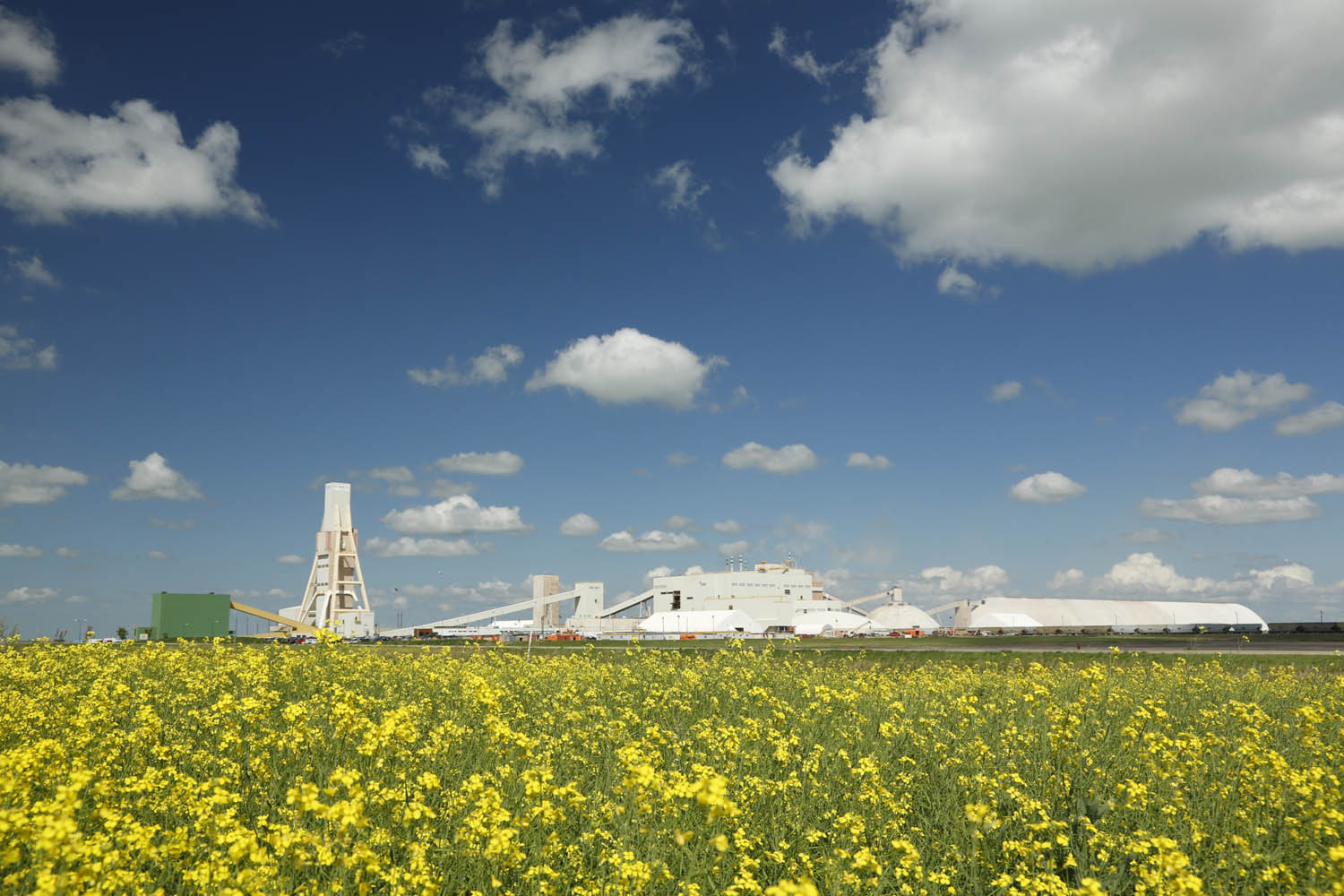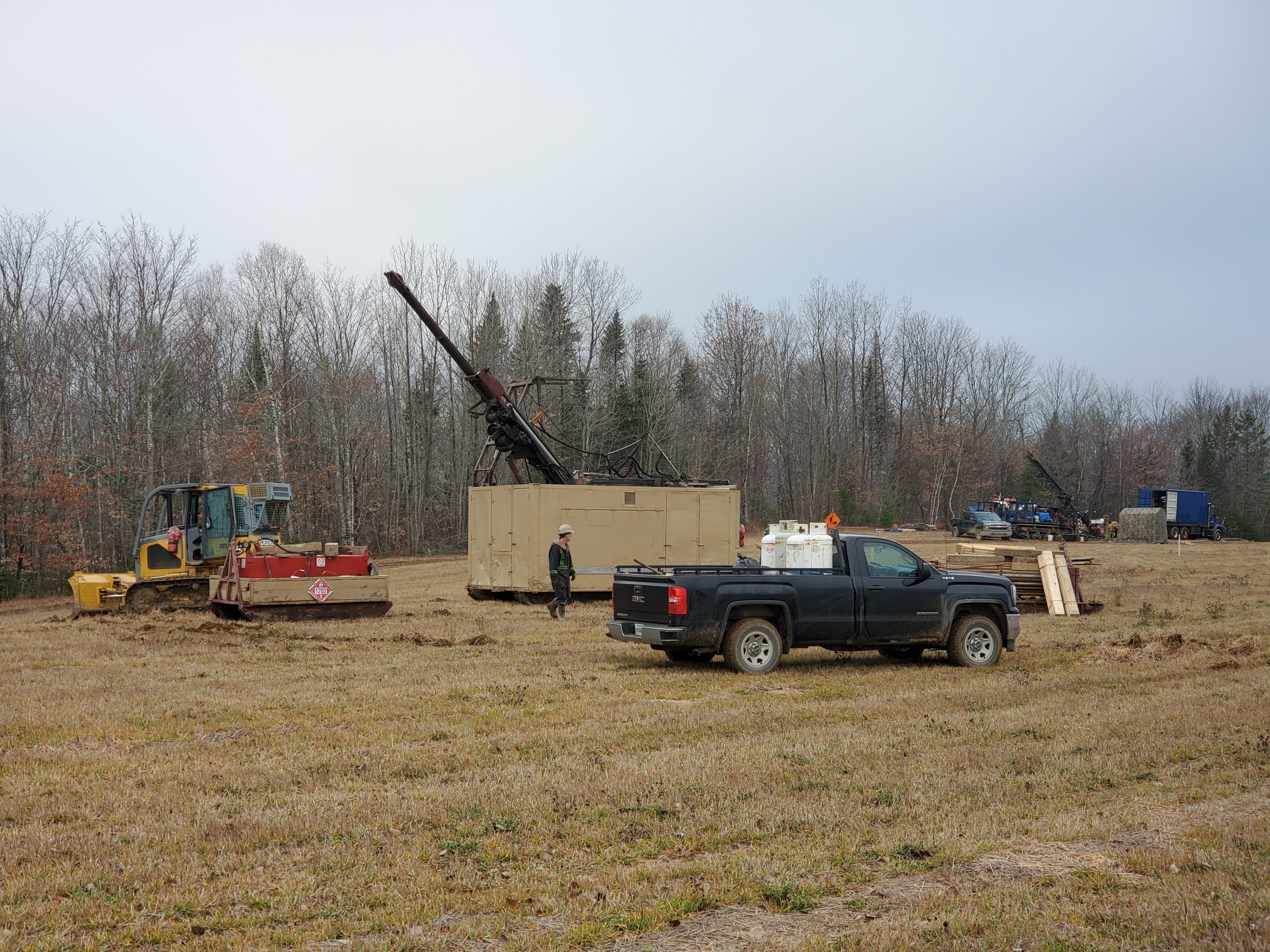The ‘Silicon Valley’ of Mining tech

Cliff Fielding Building
Norcat’s underground test mine facility, about 40 minutes northwest of Sudbury, Ont., is full of interesting sights: New technology being installed and tested, underground classrooms that are used to provide safety training, a production crew of miners who are learning on the job.
And soon, the above-ground facilities will be equally impressive.
The current buildings – which now consist of a couple of portables that house modest offices and change rooms – will be replaced by a purpose-built structure more befitting of Norcat’s big ambitions.
“Our intent is really to become the global one-stop shop for all that is the future of mining technology and innovation,” says Don Duval, the organization’s CEO.
A private, non-profit organization that was founded in 1995, Norcat’s plays a central part in Sudbury’s rising place in international mining.
“We’re the only innovation centre in the world that owns and operates an underground mine that enables startups, small and medium companies, international companies to develop, test and ultimately demonstrate emerging technologies that they believe are poised to transform the global mining industry,’ Duval says. “That is the role that we play – to really anchor this mining technology/mining innovation ecosystem based around this unique asset.”
Construction of Norcat’s new $3-million building, which will include meeting spaces, office space for tech companies, and space for academic institutions and government organizations, should start in March and be complete by the end of 2019.
In addition to connecting the “buyers” and “sellers” of mining innovation, Norcat provides skilled labour training and development programs. Its services – both at its test mine and its main location in Sudbury – are in high demand.
“We’re heavily investing in expanding our service operations just to meet the forecasted demands,” Duval says, adding the new facilities will sustain the organization for the next seven years of growth.
Twenty per cent of the organization’s business already comes from outside of Canada – compared to five years ago, when it had no international clients.
Global ambitions
It’s not just Norcat that has global ambitions for itself and for Sudbury.
Ricus Grimbeek, who was appointed as COO of Vale’s North Atlantic Operations and Asian Refineries in mid-2018, has signalled that he intends to run the division from Sudbury, with the city serving as a central node. He also sees the potential for Sudbury to become “the global hub for digital underground mining,” he said at a Greater Sudbury Chamber of Commerce event in January.
Sudbury is already a natural hub of mining: Vale and Glencore operate six mines within the city limits; there are roughly 350 mining service and supply companies that call Sudbury home; and there are three post-secondary institutions that train the mining workforce.
But Pierre Zundel, interim president of Laurentian University, says the university, Grimbeek and others want to push the Sudbury’s status to a new level.
“We’re working together with Vale, the city, Glencore and a number of other players with the idea of turning Sudbury into the worldwide hub of deep mining and creating that sort of Silicon Valley equivalent for mining technology here in Sudbury,’6P6pZundel says.
The university itself also has high aspirations.
“I think we are already Canada’s mining university, we’re the only university in the country where mining figures prominently in its strategic plan and we have that strength right across the mining cycle disciplines,” Zundel says.
“Our society can’t function without mining and the products that mining creates. Our ambition is to make sure that mining happens in a way that’s environmentally safe, that’s respectful of Indigenous communities and the local population, that’s safe for workers, and we think we can help with all of those – not just here, but around the world.”
The status that Sudbury and Laurentian already enjoys is evident in the international visitors they get – delegations from China, Russia, Peru, Chile and other places that are looking to tap into the latest knowledge on environmental practices, safety practices or new technology. “We had a delegation of 22 executives from Chinese mining companies and government agencies here in the fall looking to figure out how it is that Ontario is the safest mining jurisdiction in the world and looking at our research and development work around mining and safety,’6P6pZundel says. “So we’re ambitious, we think that we can do some good in the world and we’re going to go hard.”
Competitive advantage
The mining sector remains subdued, at least compared with previous manic phases of growth and unsustainably high metals prices. Yet companies, organizations and individuals that are part of Sudbury’s mining innovation cluster are unfailingly optimistic about their individual and collective futures.
The global mining industry is looking for solutions to its productivity, environmental, and health and safety issues, and the unique concentration of mining supply and service companies, academic and non-profit organizations in northern Ontario and centred in Sudbury, is delivering them.
Hard-Line Solutions, for example, a company that provides teleremote systems for underground mining machinery, may be based just outside of Sudbury in Dowling, but it doesn’t depend on local business. Only 4% of Hard-Line’s sales are in Sudbury – and the company has aggressive global expansion plans.
“Every time there’s a local strike, we grow,” says Hard-Line founder and CEO Walter Siggelkow, recalling the year-long strike at Vale’s operations in 2009-10. “We don’t follow the rules when it comes to following the downturns in mining – we are very competitive.”
Once Canadian companies start working with Hard-Line in Canada, they tend to deploy the technology to their other operations in other parts of the world, he notes. “In one year we did work in Honduras, Nicaragua, Chile, the year after was Tunisia – but it was all taken there by Canadian mining companies.”
While Sudbury is not the most convenient base to serve international clients, Siggelkow says it has been helpful to have so many mines within a 20-minute drive, plus others in northern Ontario and Quebec that are only a few hours’ drive away. He also credits Norcat’s testing and demonstration facilities as a big help in developing the business, especially since arranging testing in most working mines is so difficult.
“The Norcat facility gives a place for companies to go rent space and they’re guaranteed they’re going to have X amount of time to do their testing,” Siggelkow says. “That’s one of the things that’s really helped us be able to push our technology ahead is the availability of our test mine.”
The company, which has grown from a startup in 1996 to an international business, can take clients to the drift at the mine that they rent at almost any time to demonstrate its technology in action. It’s also run their machine at the Norcat test mine remotely from Perth, Australia, to show potential clients.
“It’s a 12-hour time difference so the Norcat people were very willing to actually work a weird schedule so that we could actually do that demonstration and that testing,” Siggelkow says.
The workforce of the future
It’s no secret that the mining sector is facing a severe and worsening talent shortage.
To compete for existing talent, Hard-Line is opening a new building to house its R&D team in the city as a means of attracting and retaining talent who want to be downtown.
Felicia Brunelle, Hard-Line’s vice-president of business development, says one of the tangible benefits of Sudbury’s growing reputation for mining innovation could be attracting the right talent to the area, which allows the company to keep its head office in Sudbury.
“That growing reputation will be very important because recruiting for these technical positions is critical to maintaining our competitive advantage,” Brunelle says.
It, and other companies, are also working closely with Laurentian.
The Bharti School of Engineering for example has recently seen a $2-million donation from Iamgold to help develop labs in mining engineering technology, and a $250,0000 donation from Hard-Line to establish a mechatronics lab at the school.
The partnerships provide industry insight into where mining education is headed and Laurentian insight into industry.
Laurentian University’s close ties with industry are helping it devise strategies to bring more people into the sector.
“We are training increasing numbers of people with mining cycle discipline capabilities,” Zundel said. The university recently had 25 faculty members and students from the University of Limpopo in South Africa for graduate and undergraduate degrees in mining-related disciplines.
“They were supported by Ivanhoe Mines, a Canadian company operating in South Africa to come here because it’s really the best place to do that type of work,” Zundel said. “And we have ongoing conversations with other Canadian mining companies at various stages of development who are looking to send students from their operations overseas to Canada.”
While some of the students who study in Sudbury go back to their home countries, others stay and add to Canada’s talent pool.
While it’s not yet a formalized initiative, Zundel has also been speaking with industry players about offering guaranteed opportunities for internships, co-ops and placements for students coming to the mining-related programs so the pathway to work is clearer for them.
Also in the next several months, Zundel expects a new director of the university’s Goodman School of Mines to be named.
The Sudbury ‘miracle’
Sudbury’s unique underground mining innovation network has arisen as a result of both natural factors and a lot of deliberate planning, hard work and ambition.
“Of course we’re sitting on the largest environmental rehabilitation project related to mining in North America and the re-greening of Sudbury,” Zundel says.
On the environment front, the city’s collective expertise in cleaning up mine waste comes from Sudbury’s mining history. The region was extremely polluted because of emissions from the nickel refineries.
“I was here in the ‘70s, working for Falconbridge as the senior ground control engineer,” says Vic Pakalnis, the CEO of Mirarco (Mining Innovation Rehabilitation and Applied Research Corp), another part of the mining innovation ecosystem. “Sudbury was awful. The air was so thick with sulphur dioxide. The lakes were 80% dead.
“I come back six years ago and it’s a miracle – the lakes are back – 300 of them. We have more lakes than any other municipality in Canada and they’ve got fish in them that you can eat!”
The re-greening of Sudbury was accomplished through work by the University, whose Vale Living With Lakes Centre continues to do top-flight work on remediation of industrial landscapes, as well as the mining companies.
“We were one of the groups that made it possible to re-green the Sudbury basin,” Zundel says. “It was our earth scientists who developed the chemical formula that was used to make the soil habitable for plants again as part of that re-greening and many of our grads have done work on both the soil and the lakes to try to figure out how to bring them back to life after that industrial pollution.”
Now, so much progress has been made in terms of emissions technology that Vale recently announced it is decommissioning its 380-metre Superstack, which since the early 1970s has been used to disperse sulphur gases from its smelter away from Sudbury. It will be replaced by two, more efficient 137-metre stacks.
The company recently completed a $1-billion Clean AER (atmospheric emissions reduction) project that will reduce sulphur dioxide emissions by 85% and metal particulate emissions by 40%.
“We have an amazing population here that’s very entrepreneurial,” says Mirarco’s Pakalnis. “I’m very proud of Sudbury and what it’s become.”





Comments